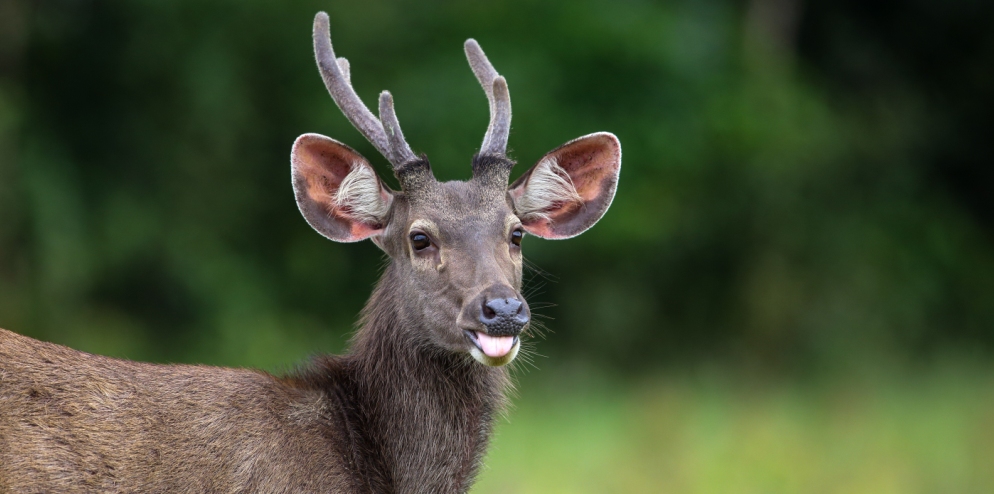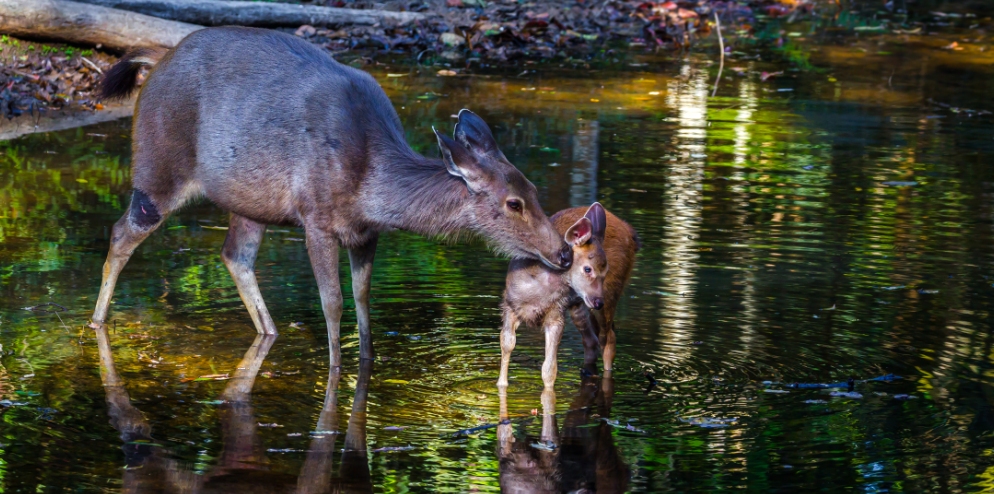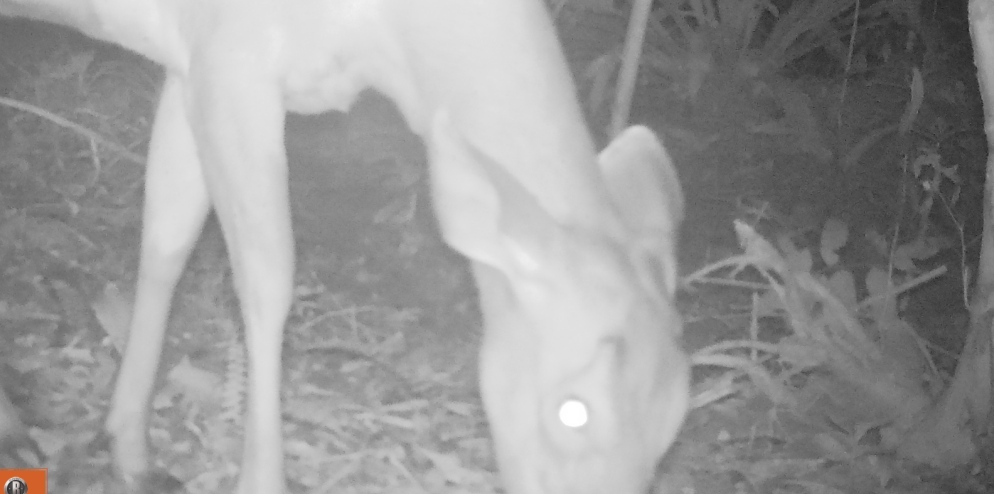September 10, 2019
Meet the Sambar Deer (Rusa unicolor). It is a mammal native to South Asia, and is found in various countries including Nepal, India, Thailand, Taiwan and Malaysia. It is also found in Indonesia where it is known as Rusa sambar.
It is one of the 75 mammal species which have been identified in the Restorasi Ekosistem Riau (RER) area within the Kampar Peninsula. Currently, there are seven subspecies of Sambar Deer which are recognised, with varying subspecies found in different geographical areas. For example, the Malayan sambar deer is found in Sumatra, while the Bornean sambar deer is found in Borneo.

Sambar Deer generally reach a height of 100 to 160cm and may weigh as much as 545 kg, although it is more typically 100 to 350 kg. Western subspecies tend to be larger than those who come from the East. Females also tend to be smaller than males.
Like most deer, only male Sambar Deer have antlers. These antlers are divided into three branches, and are typically up to 110cm long in adults. Sambar Deer also shed their antlers each year, typically after mating season.
The Sambar Deer has a shaggy coat which can be yellowish brown to dark grey in colour. Although it is usually of a uniform colour, some subspecies have been noted to have chestnut marks on their rumps and underparts.
Sambar Deer have small but dense manes, which tend to be more noticeable in males. Their tails are relatively long for deer, and are generally black above and whitish underneath.
Although this deer mainly prefers living in the dense cover of shrubs and grasses, this is dependent on its surrounding environment, which can be quite different with this species having such a wide range across Asia.

Sambar Deer are almost never far from water sources, and they are known to be good swimmers. They will run to safety to water if they are chased by predators. In this regard, Sambar Deer are able to detect predators due to excellent hearing and smelling abilities. The deer may also attack predators in shallow water. Despite their lack of antlers, female Sambar Deer readily defend their young from most predators – a trait which is relatively unusual among deer.
This species is crepuscular, meaning they are primarily active during twilight (the periods of dawn and dusk). They may sometimes feed at night if they are hungry.

Like all deer, Sambar Deer are herbivores and feed on a wide variety of vegetation, including grass, foliage and fruit. Sambar Deer are grazers, using their teeth to cut grass rather than rip it out of the ground. Therefore, they tend to choose young grass or shoots which are still soft, and deer bite marks are easily seen in forests.
Male deer mark their territories using their own urine, by digging their antlers into urine-soaked soil and rubbing them against tree trunks. Sambar Deer have extraordinary bipedalism abilities out of all deer species, and stags make use of this by standing and marking trees above them with their antlers.
Although Sambar Deer mate and reproduce year-round, they do typically breed between September and January. Gestation lasts around eight months, and one calf is normally born at a time.
Since 2008, the Sambar Deer has been classified as a Vulnerable (VU) species by the International Union for Conservation of Nature (IUCN), meaning that it will become endangered if circumstances threatening its survival continue. This includes loss of habitat due to deforestation, but primarily threats from humans who trap and trade this deer for food.